DISCUSSION OVERVIEW
 |
| Here is an image of a JAS-39 Gripen fighter aircraft of the Swedish Air Force. Image Source. |
The showcasing of bilateral flexing in terms of diplomatic matters has stirred much into the field of national defense in the past couple of months from the start of the year 2024, as this comes primarily in the ongoing materialization of the Philippine Air Force’s Multirole Fighter Jet Acquisition Project.
In the Department of National Defense’s Latest Procurement Monitoring Report, the ongoing limbo on the project points to the awaiting ratification of the Memorandum of Understanding or MOU with Sweden.
In a statement done in the first few weeks of the year 2024, the Swedish Embassy to Manila disclosed a message that pertains to the long-term bilateral partnership between Sweden and the Philippines surrounding the aspects of National Defense.
The statement reads with the following message: “We look forward to continued implementation of the MOU on the defense cooperation between the Philippines and Sweden.” Followed by the information that the MOU signed on 3 June 2023 and ratification three months later.
The statement made by Sweden then countered by the Philippine Department of National Defense, whereby the clarification has made that both the Philippines and Sweden have actively conducting series of meetings, with the recent one took place on January 17, 2024 that aims in finalizing the Implementing Agreement (IA) part of the MOU.
The IA pertains to the provisions in the MOU on the Procurement of Defense Materiel and Equipment, abbreviated IA-PDME. This will take place within the month of March 2024.
These unfolded developments immediately gave a quick yet hasty conclusion from the defense community that the Philippine Air Force’s Multi-role Fighter Jet Acquisition Project may likely get awarded to Sweden’s SAAB rather than the competitor Lockheed Martin of the United States, as the primary indicators of processes involving the bilateral Memorandum of Understanding on the Procurement of Defense Materiel and Equipment are all taking place.
But there is nothing set in stone just yet, as the Department of National Defense’s Facebook page quickly denies what’s in the reports, with the statement providing a sign that the Philippine Air Force’s Multi-Role Fighter Jet Acquisition Project is still open and ongoing.
This means that the deal does not get limited to what’s between the bilateral relations of the Philippines and Sweden, but there are still last-minute changes to the deal, suggesting that Lockheed Martin’s F-16 Viper deal still stands a chance.
Prospects for the Philippine Air Force to secure the SAAB JAS/39 Gripen C/D variant only exacerbates to its worst form with the newest deal set between Sweden and Hungary, as the latter renews its lease deal with the former, whereby the Hungarian Air Force expects to get at least four (4) more units of new JAS-39 Gripen C/D variant multi-role fighter jet, increasing the number to at least eighteen (18) units. This means that a squadron of JAS-39 Gripen for the Philippines seems likely to become less viable than ever.
With the discussion regarding the reduction of pre-made and brand-new JAS-39 Gripen C/D multirole fighter jets to at least ten (10) units, less than the intended twelve (12) units that the Philippine Air Force considers as a squadron, plus the plans laid for the second phase of the Multirole Fighter Jet Acquisition Program, gives the viability for SAAB to push its newer JAS-39 Gripen E/F variant to the Philippine Air Force, although it depends primarily to the discretion of the planners of the leadership.
DEVELOPMENT
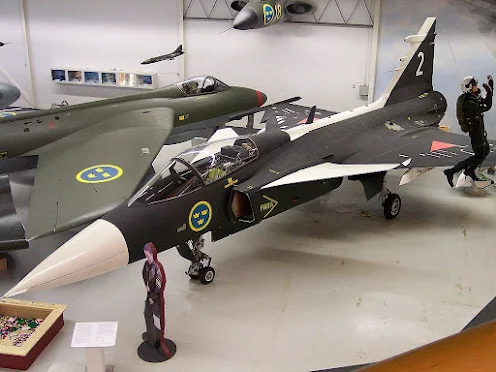 |
| Here is an image of a JAS-39 Gripen of the Swedish Air Force, sporting company demonstrator scheme, in display in the service branch's museum. From Wikimedia Commons. |
It is a given and fully understandable concept that an aerospace company like SAAB will continuously develop their existing products, such as the JAS-39 Gripen into later variants that comes as an improvement, incorporating enhanced capabilities that perform better or goes nonexistent to the previous iterations of the aircraft.
The aircraft’s development comes as continuous, as the Swedish aerospace company puts modification into the design of the previous JAS-39 Gripen designs, like the existing C/D variant.
The overall design of the JAS-39 Gripen traces back to its first development in the mid-1980s, in an era when the Swedish Air Force aimed to replace its aging SAAB 37 Viggen fighter aircraft, itself developed in the late 1960s and introduced into active service in the early 1970s.
In context, the SAAB 37 Viggen fighter aircraft also incorporates the iconic delta-wing design and structure along with its fuselage, of which it serves as an inspiration for the development of the JAS-39 Gripen as the aircraft design known today.
In the development phase of the first variant of the JAS-39 Gripen for the initial requirements of the Swedish Air Force, as they are about to replace their legacy fighter aircraft mentioned from that period, the premise into the inception of the JAS-39 Gripen into a capable multirole combat aircraft that it is currently is on the Swedes seeking performance on a versatile fighter aircraft that can take off and land on short fields, roads, and snowy runways, while having a maximum performing speed of Mach 2 on intercept.
Throughout the development phase for the JAS-39 Gripen in the mid-1980s, the Swedish firms, with guidance from the Swedish Defense Materiel Administration (FMV), formed a consortium named "Industrigruppen JAS", of which, aside from the joint SAAB-Scania partnership,also comes with other companies such as Volvo Flygmotor, Ericsson, and Foerenade Fabriksverken. The aircraft’s project designation comes as the “SAAB 2110”, adhering to the Swedish ‘JAS’ aircraft requirements, translated as an aircraft with ‘Fighter, Attack, & Reconnaissance’ capabilities.
The development of JAS-39 Gripen prototype models began in 1984, with a complete sample fully accomplished in early 1986. It took two (2) years and intensified political pressure to cancel the budget and buy foreign-made aircraft resulted from cost overruns that plagued the development of the project for the multirole fighter aircraft prototype to have its first test flight on December 9, 1988, proving to the critics of that time that Sweden and SAAB has the capability of developing and producing its own aircraft, setting the direction into the SAAB JAS-39 Gripen aircraft of present day.
For the Gripen E variant, it stemmed out from the previous upgrade development project of SAAB for the aircraft named as the “Gripen NG” variant, whereby its primary feature being the compatibility of the aircraft to the NATO requirements, especially with the country of Sweden now a new full-fledged member of the military organization. Add to this the advanced avionics integrated into the aircraft, and also the new AESA radar that are not integrated to the likes of the Gripen C/D variant.
Another thing to point out to the development of the Gripen NG or what is eventually be the Gripen E variant is the use of General Electric F414 engine as opposed to the Swedish-built licensed copy of the General Electric F404 engine found on the JAS-39 Gripen C/D variant.
The development timeline of the aircraft comes in the late 200s to early 2010s, with the first demo started in 2007, and the first pre-production copies introduced in 2013. Subsequently, Sweden and Brazil take up orders for these new aircraft.
CURRENT GRIPEN E USERS AND BOOKED ORDERS
 |
| The Brazilian Air Force categorizes the JAS-39 Gripen E as F-39A. Image Source. |
In terms of current users and orders booked for the SAAB JAS-39 Gripen E multirole fighter jet at the time this article has written, there are only two (2) countries that have actively ordered and operate this fighter aircraft, such as the Brazilian Air Force and the Swedish Air Force.
The Brazilians have booked an order of thirty-six (36) units of the JAS-39 Gripen multirole fighter jets after competing with Dassault Rafale and F/A-18 Super Hornet on a deal, while Sweden ordered at least sixty (60) units of this type of fighter jet.
This means that based on the information provided, there are at least ninety-six (96) units that are in the process of production, spanning two production lines as Brazil produces its licensed copy of the JAS-39 Gripen E variant through the country’s own aerospace company Embraer in a technology transfer agreement. In context, Embraer is this similar company that has provided A-29 Super Tucano Close Air Support Aircraft for the Philippine Air Force’s close air support requirements.
In comparison, the Swedish aerospace company produces at least ninety-five (95) JAS-39 Gripen C/D variant for the Swedish Air Force alone from 1996 to 2007, although the numbers initially ordered for the JAS-39 Gripen E variant might eventually increase as the Swedish Air Force might replace the currently servicing JAS-39 Gripen C/D variant, eventually. As the Gripen E gets into production, the C/D variant likely receives operational and capabilities support all the way to the 2030s.
Going further, General Dynamics, and eventually Lockheed Martin, produces at around 4,600 units of F-16 multirole fighter aircraft as operated by more air forces around the globe, with Thailand, Singapore, and Indonesia being its primary users in Southeast Asia. The units mentioned comprise more of the earlier variants of the fighter aircraft than the latest Block 70/72 Viper variant produced in South Carolina. In context, SAAB competes with Lockheed Martin’s F-16 Block 70/72 with the Philippine Air Force MRF project.
From a logistical point of view, the number of users of the type of aircraft across the globe defines the viability of its use for the end user like the Philippine Air Force to consider, as there is the full abundance of spare parts sources that came from multiple sources.
However, that commonality of the aircraft design might entail its utilization against another country that uses this similar type of aircraft, as in the case between Greece and Turkey with their F-16 fighters.
Regarding potential users and prospects that SAAB sets in selling its JAS-39 Gripen E to other countries other than the Philippine Air Force under its Multirole Fighter Jet Acquisition Project, they set their sights to two Latin American countries such as Colombia and Peru, with Brazil service as the reference of this prospect marketing.
In Southeast Asia, the Philippines has a likely companion with another Gripen user such as Thailand, in which this country aims to get more Gripen fighters in its aircraft inventory.
While the potential customers of the SAAB JAS-39 Gripen seem promising, this does not mean that things will come according to the desires and projections set by the Swedish aerospace company, as the competition like Lockheed Martin always come with offers that makes it irresistible to aspiring end-users like the Philippine Air Force. While the offers provided are enticing enough, there are more details to delve into, especially with the specifications of the fighter aircraft, as compared to competitors.
SPECIFICATIONS
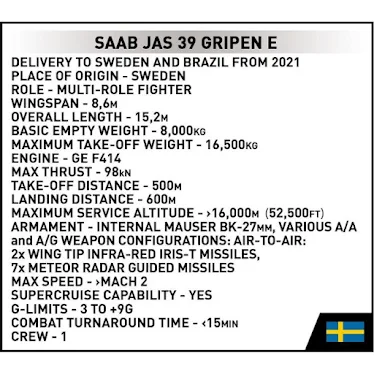 |
| Details of the JAS-39 Gripen E are in the image. Kindly click the image to enlarge. Reference Source. |
Aside from the detailed information provided in the image above, the JAS-39 Gripen E/F variant always come with two forms - the more-known, single-seater Gripen E multirole fighter aircraft that is the primary product intended for combat roles of both air defense and close air support operations, and the Gripen F conversion trainer fighter aircraft, whereby it provides newer pilots a familiarization platform before getting embarked to the single-seater JAS-39 Gripen E.
This also means there is a slight variation on both the single-seater and the double-seater variant of the latest version of the JAS-39 Gripen, whereby according to the detailed specifications provided by SAAB, the latter comes with a slight longer fuselage of 15.9 meters overall, as compared to the 15.2 meters that is the default length for the JAS-39 Gripen E variant.
Aside from the slight variations on the aforementioned plus the absence of the gun on the Gripen F variant, there is not much difference between both types in other areas.
As marketed, the Gripen E, as described by SAAB, has the powerful GE F414G engine, great range and the ability to carry an impressive payload with its ten hard-points. It also has a new AESA-radar, InfraRed Search and Track System (IRST), highly advanced electronic warfare and communication systems. The E-series redefines air power for the 21st century by extending operational capabilities. The hard points have increased over JAS-39 Gripen C/D’s eight, meaning that the Gripen E can carry more munitions and fuel tanks.
Like any modern fighter aircraft employed by other aerospace manufacturers of today, the Swedish aerospace company also incorporates Electronic Warfare or EW capabilities on the JAS-39 Gripen E/F variant, providing the multirole fighter aircraft with its own array of both offensive and defensive electronic warfare options that ensures increased likelihood for a mission success, while making sure that the aircraft’s survivability increases and enables both the fighter and its pilot to return to base safely.
As for its armaments, it has the capability of carrying and firing the IRIS-T short-range infrared missile and the Meteor Beyond-Range Air-to-Air Missile or BVRAAM, while being capable of firing missiles that are typically available on the Philippine Air Force’s Spyder Air Defense System such as the Python short-range missiles and Derby long-range missiles. For ground targets, the JAS-39 Gripen E carries Mk82, Mk83 and Mk84 bombs, AGM-65 Maverick missiles, and GBU-10/12/16 laser-guided bombs.
Now, on the comprehensive specifics of the JAS-39 Gripen E’s advanced sensor systems on top of its highly marketed Electronic Warfare (EW) suite. The Swedish-made multirole fighter jet sports the Selex ES-05 Raven active electronically scanned array or AESA radar, giving real-time position of both friendly and opposition forces in an actual combat over a certain air domain. The IRST system is the Skyward G also by Selex. Its Laser Designation Pod is by Rafael Advanced Systems Ltd., and can fit with different pod systems.
Ultimately, the JAS-39 Gripen E multirole fighter jet comes with a digital cockpit, which is a mainstay feature in currently produced fighter aircraft, and its feature being the hands-on-throttle-and-stick or HOTAS flight controller stick that provide additional capability options for the pilot, such as the overall situational awareness of the entire battlefield. With the subsystems mentioned, the JAS-39 Gripen E/F variant is a decent and capable multirole fighter aircraft of its own right.
COMPARISON
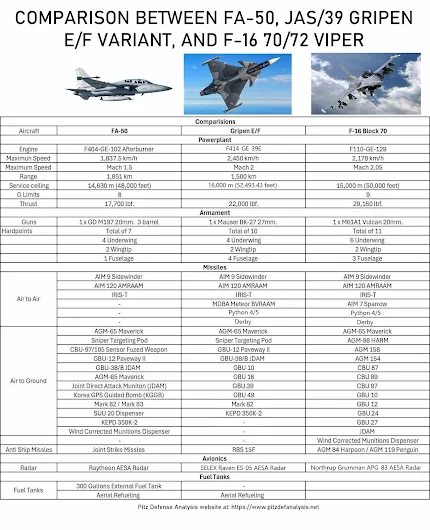 |
| A table showing comprehensive comparison between an FA-50, a JAS-39 Gripen E/F, and an F-16 Block 70/72 Viper. Image Reference Here. |
The improvements introduced to the JAS-39 Gripen E/F variant makes it a worthy multirole fighter aircraft, competing with other contemporary single-engine fighter jets produced by other aerospace companies such as both F-35 Lighting II and F-16 Block 70/72 Viper of Lockheed Martin.
In the Philippine Air Force’s setting, this comparison will come between three types of fighters which, aside from the JAS-39 Gripen E/F multirole fighter jet, will also include the F-16 Block 70/72 Viper and the FA-50PH light fighter.
Corroborating the information provided above, the F-16 Block 70/72 Viper comes with a single Pratt and Whitney F-100-PW-229 engine, or a General Electric F-110-PW-129 engine, each coming with a thrust output of 29,100lbs and 29,500lbs, respectively.
The engines provide an excellent performance for the F-16 Block 70/72 multirole fighter jet, as it helps provide the aircraft’s maximum speed to around Mach 2.05 or 1,353 miles per hour at 40,000 feet altitude. The aircraft’s maximum sustained speed is at Mach 1.89.
Still regarding the F-16 Block 70/72 Viper, its certified service ceiling as specified in the table provided is at 50,000 feet, in which this is the standard across different variants of the F-16 Fighting Falcon since its development in the 1970s by General Dynamics.
And as with all the variants of this single-engine fighter aircraft now produced by Lockheed Martin, the F-16 Block 70/72 Viper has an airframe with a rating of withstanding up to nine (6) Gs, or nine times the force of gravity.
Now, it is FA-50PH light fighter trainer aircraft’s turn to have the information provided above getting corroborated as compared to the two primary candidates for the Philippine Air Force’s own Multi-role Fighter Jet or MRF Acquisition Project. For a start, the light aircraft produced by Korea Aerospace Industries or KAI comes with a General Electric F404-GE-102 turbofan engine. The JAS-39 Gripen E/F comes with a General Electric F414-GE-400 engine, which is more powerful.
The G404-GE-102 turbofan engine found onboard the FA-50 light fighter trainer aircraft provides the South Korean-made jet the maximum performance speed of around 1.5 Mach, or one point five times more than the speed of sound.
The aircraft comes with a service ceiling of 48,000 feet, thrust of 17,700lb, and an airframe that can withstand up to eight (8+) Gs, or eight times the force of gravity. Philippine Air Force’s leadership expresses desire to purchase more of this aircraft, which is for an entirely different acquisition project.
Regarding the armaments each aircraft presented comes and can carry with, it is noticeable that each aircraft have some commonality in some air-to-air missiles and air-to-ground bombs used, as this is usually the standard for western-based technological integration that is available on all three fighter jets depicted.
While all fighter aircraft mentioned can carry and fire an AIM-9 or AIM-120 AMRAAM missile, only the Gripen E/F can carry and fire the Meteor BVRAAM as the F-16 Viper with the AIM-7 Sparrow missile.
Completing the corroboration of data, the Raytheon AESA radar that the FA-50 comes is the PhantomStrike radar, of which this may come as an upgrade for existing aircraft from 2025 onwards and as an included version for the succeeding versions like the FA-50 Block 20.
The Philippine Air Force FA-50PH comes with a different radar solution, likely the IAI EL/M 2032 pulse radar. SAAB’s JAS-39 Gripen E/F comes with SELEX Raven ES-05 AESA Radar, and the F-16 70/72 Viper comes with the Northrop Grumman APG-83 AESA radar.
THE HUNGARIAN DEAL’S EFFECT TO THE PAF MRF PROJECT
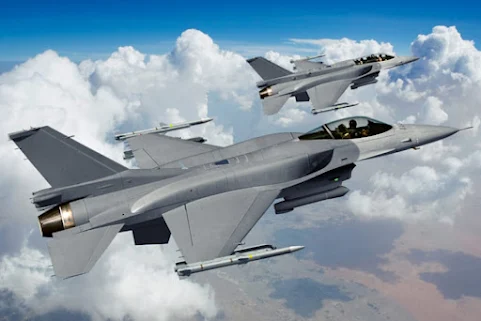 |
| Lockheed Martin’s F-16 Block 70/72 Viper, along with the ones under U.S. Excess Defense Articles or EDA, is the Philippine Air Force’s other MRF platform option. Image Source. |
As the Philippine Air Force sets into finalizing its prospects for the awarding of the multi-role fighter jet acquisition project, another country secures additional units of JAS-39 Gripen C/D variant multi-role fighter jet in a form of a renewed lease deal that involves adding the numbers on the already-leased aircraft for this country.
To take some notes, this website discussed the viability of a lease option for the Philippine Air Force from a different financial standpoint in this article link right here.
This country refers to the Eastern European country of Hungary, of which the premise of this decision comes as this country provides a decision to let Sweden enter the North Atlantic Treaty Organization or NATO, of which Hungary is a member.
The renewed deal increases the number of leased JAS-39 Gripen C/D variants within the Hungarian Air Force to at least sixteen (18) units, increased from the original twelve (14) leased units as the result of this renewed lease with the increase of four (4) more fighter jets.
With the outcome of the deal reducing of new JAS-39 Gripen C/D variants in SAAB’s storage reduced to ten (10) units, and the Philippine Air Force’s tender for the acquisition of at least twelve (12) brand new multi-role fighter jets or MRFs at the contract amount of Php 61 Billion still never changes, this option is becoming less tenable, and instead making the SAAB JAS-39 Gripen E/F a likely offer made by SAAB for the Philippine air defense requirements, without this following advantage that the Swedish aerospace company have.
The advantage mentioned is regarding the speedy time for SAAB to deliver the JAS-39 Gripen for the Philippine Air Force, of which this is achievable with the fourteen (14) JAS-39 Gripen C/D variant in the storage before the Hungarians securing four (4) units from this stockpile, something that is nonexistent to the JAS-39 Gripen E/F variant that is still to deliver the first units in 2025 with Swedish Air Force being its priority. This makes SAAB’s delivery times under this deal less tenable.
But is the competition fare better? In context, the order backlogs for the production and delivery of Lockheed Martin F-16 Block 70/72 Viper multi-role fighter jets are getting longer, with the delivery of the first pair to Slovakia just taking place recently in January 2024, even with the 135 units of the fighter jet orders for other countries still on the backlog. While the figures presented show that things are not even better for Lockheed Martin about delivery dates, there is one essential thing that is at their advantage.
That advantage are the commitments made by the United States through the Excess Defense Articles and the ones provided under the Security Sector Assistance Roadmap or SSAR, of which the Philippine Air Force have the chance to secure its F-16s of the previous variants, with the option of upgrading to the latest Block 70/72 variant presented.
This puts Lockheed Martin’s deal under the MRF project at an advantage, as this presents logistical advantages if a platform chosen goes similarly to the one provided in the SSAR.
If the F-16s presented from the SSAR or the Excess Defense Articles push through, not to mention the proposed measures from the United States Senate that provide Foreign Military Financing to the Philippines for five (5) years, the speedy delivery dates might less likely playing a role in the decision-making, as these measures presented are enticing enough for the Philippine Air Force to consider, especially now that the bilateral relations between the United States and the Philippines being in the overdrive.
DISCUSSION SUMMARY
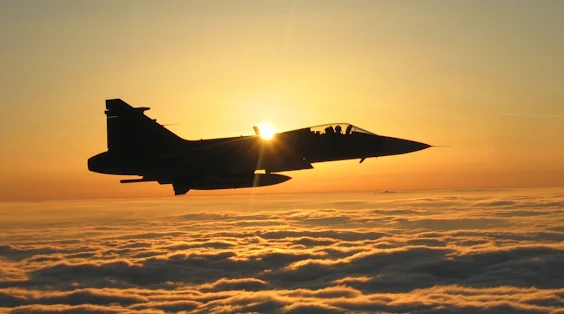 |
| Here is an image of a single JAS-39 Gripen fighter jet flying in the sunrise. |
As the Philippine Air Force puts the Multi-role Fighter Jet Acquisition Project in the priority list, with the likely decision and awarding of the contract taking place within this year, the Swedish defense company SAAB intensified the offer for its multi-role fighter jets, as the JAS-39 Gripen Block C/D variant becoming less viable with remaining new units left being less than the desired number intended for the project as the result from the recent deal with Hungary.
From the Swedish point of view, particularly those for its government, the decision to proceed with the Hungarian renewed leases for its existing fleet of JAS-39 Gripen C/D plus the additional four (4) units in this arrangement comes as an advantage, especially that this is a crucial element that enables the aforementioned Scandinavian country to join the North Atlantic Treaty Organization or NATO, of which this includes approval of all member countries, Hungary included.
Added to this, a bolstered air defense capabilities Hungary receives from this renewed arrangement provides an enhanced framework needed for Eastern European countries for self-defense, especially with the looming threats posed by the Russians even with the ongoing conflict in Ukraine as the countries of Europe keep on providing the latter military hardware it needs to survive and keep the fight going. Sweden’s entry to NATO comes with its commitments that might involve investing in its fighter jet production.
This change provided a welcoming development for SAAB to promote its newest multirole fighter jet on the line, of which it is the JAS-39 Gripen E/F variant, also formerly known by its development model designation ‘JAS-39 Gripen NG’ variant. While this offer might provide boosted capabilities that count as an improvement over the earlier JAS-39 Gripen C/D variant offered by the Swedish aerospace company, it removed one essential component of it to win the award, which is the time element.
The time element gave advantage to the primary competitor of the Multi-role Fighter Acquisition Project, whereby the Excess Defense Article or EDAs coming from the United States serve as a preference for an immediate delivery of fighter aircraft for the Philippine Air Force to use, even with Lockheed Martin’s increasing order backlogs of F-16s in its South Carolina production line. All of which helps provide the Philippine Air Force a boost of its capability shall the F-16 Block 70/72 Viper get chosen.
As the competition is still ongoing for the Multi-role Fighter Jet Acquisition Project of the Philippine Air Force, the primary decision-makers within the air service branch and the Department of National Defense are still looking for ways to maximize the offer of both aerospace companies, which eventually makes it an advantage for the Philippine Armed Forces in getting the best offer for fighter aircraft intended for air defense, with the funding it provides to this acquisition project.
Finally, this development gives preference that both aerospace companies show its determination to secure its project, and with the Multi-role Fighter Jet Acquisition Project being the priority one for both the Philippine Air Force and the Department of National Defense, it is only a matter of time for the winner of this project gets named and the contract gets awarded to the winning bidder. All of which brings the difficult decision-making phase of the project to an end.
(c) 2024 PDA.










.png)



The DFA and DND should lobby to acquire F-16 from Belgium ASAP before it can decide how many it will transfer to Ukraine.
ReplyDeleteBelgium has atleast 50 F-16A/B with MLU package.
Belgium will donate F16 A/Bs to Ukraine, though exact number is still unknown, will it donate some to the Philippines?
ReplyDeleteph laws prohibits buying surplus weapon systems, unless both houses of Congress pass a law to repeal it.
the author did raise more than a few points. very good article.
They won't donate F-16 to Philippines.
ReplyDeleteWhat the govt. could only do is purchase it once the procurement law has been amended. Plus, they can utlized the $500M military grant that's available this year.
With new technologies, the MRF operations will diminish with the introduction of drones by air, land and sea, including development of AI. MRF missions will just be for back up and recon. This actually cheaper than buying and maintaining 40 MRFs.
ReplyDeleteAsk yourself why the Thai airforce which uses both the F-16 and the Gripen wants to acquire more Gripens but no F-16s.
ReplyDelete